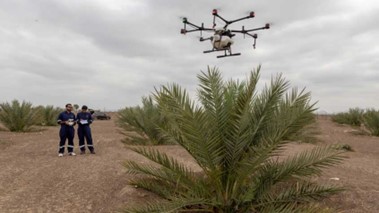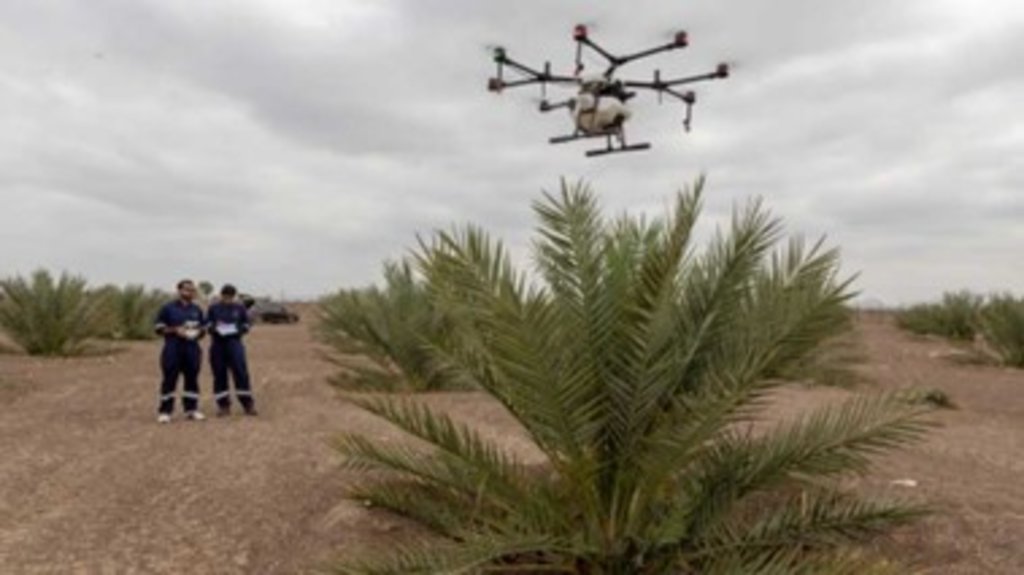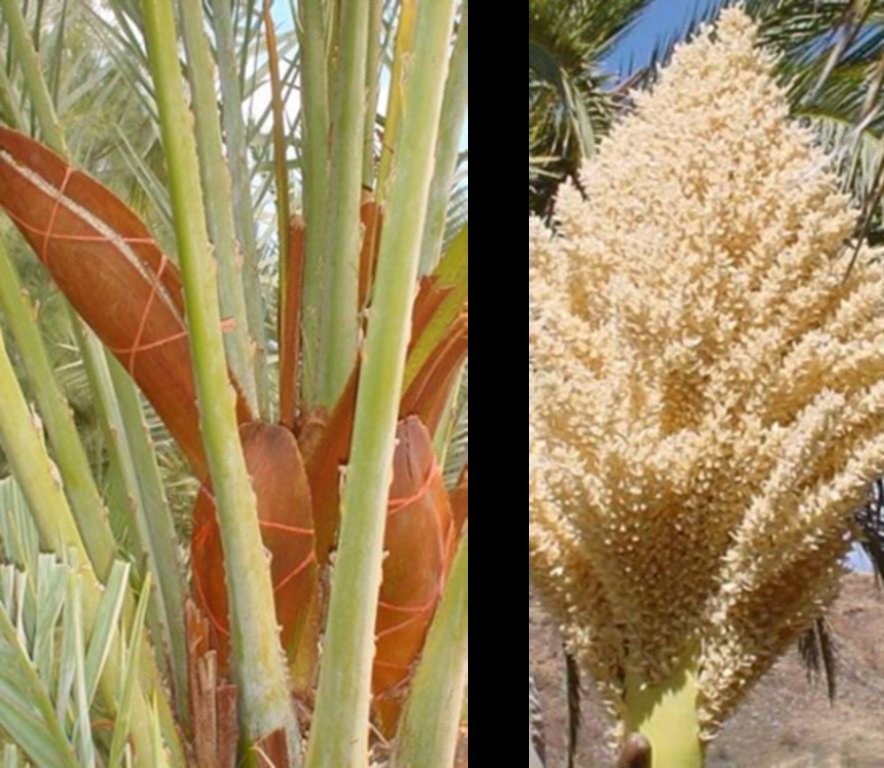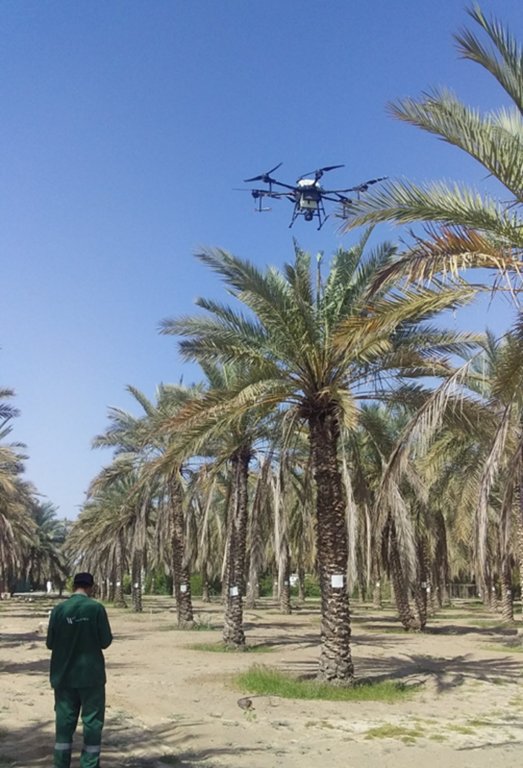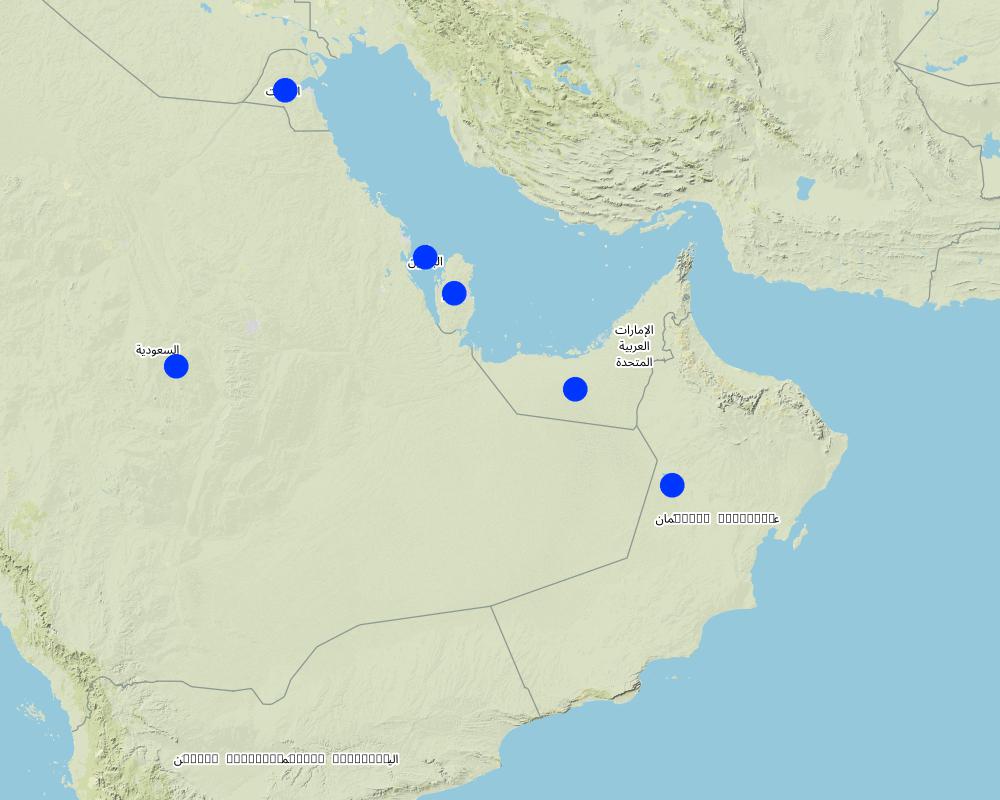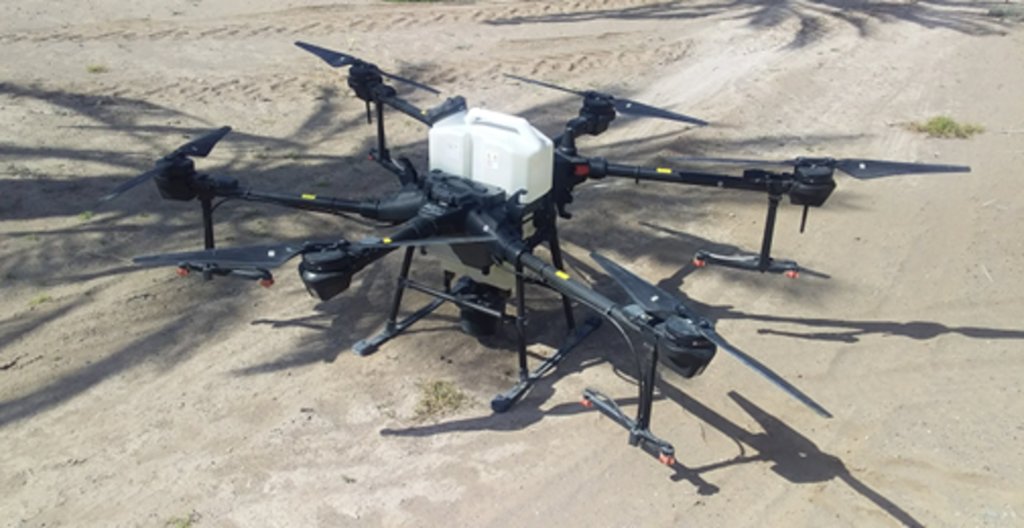Liquid Pollination for Date Palm Production [阿曼]
- 创建:
- 更新:
- 编制者: Joren Verbist
- 编辑者: –
- 审查者: Rima Mekdaschi Studer, William Critchley
technologies_5917 - 阿曼
查看章节
全部展开 全部收起1. 一般信息
1.2 参与该技术评估和文件编制的资源人员和机构的联系方式
关键资源人
Regional Coordinator APRP:
Niane Abdoul Aziz
International Center of Agriculture Research in the Dry Areas (ICARDA)
黎巴嫩
Senior Natural Resources Economist:
Dhebibi Boubaker
International Center of Agriculture Research in the Dry Areas (ICARDA)
黎巴嫩
Date Palm Consultant:
Abdulbasit Ibrahim Oudah
International Center of Agriculture Research in the Dry Areas (ICARDA)
黎巴嫩
Consultant - Date Palm Specialist (GCC):
Abdallah Ben Abdallah
International Center of Agriculture Research in the Dry Areas (ICARDA)
阿曼
Directorate General of Agriculture & Animal Research.
Al-Shaili Khalid
Agriculture & Animal Research
阿曼
有助于对技术进行记录/评估的项目名称(如相关)
ICARDA Institutional Knowledge Management Initiative有助于对技术进行记录/评估的机构名称(如相关)
International Center for Agricultural Research in the Dry Areas (ICARDA) - 黎巴嫩1.3 关于使用通过WOCAT记录的数据的条件
编制者和关键资源人员接受有关使用通过WOCAT记录数据的条件。:
是
1.4 所述技术的可持续性声明
这里所描述的技术在土地退化方面是否存在问题,导致无法被认为是一种可持续的土地管理技术?:
否
2. SLM技术的说明
2.1 技术简介
技术定义:
Pollination of date palms is essential to ensure good quality yield. Currently, pollination is done manually: this is a costly process and dangerous. Mechanised Liquid Pollination (MLP) reduces variable costs by 80% and prevents causalities while maintaining yield.
2.2 技术的详细说明
说明:
In the Middle East, the date palm is a common crop with significant cultural and economic value. Date palms are typically found in dry, arid and hot areas. Due to climate change in the form of high temperatures, heatwaves, increased water scarcity, harsh winds, poor pollination and the increase of pests, production problems are increasing. The International Center of Agricultural Research in Dry Areas (ICARDA) acknowledged these challenges and led an initiative to address the key issues. One major challenge identified was the labour-intensive and dangerous practice of manual date palm pollination: a farmer climbs up the tree and spreads the pollen. This is expensive and dangerous. An alternative tested was mechanised liquid pollination. Pollen is mixed with water and then sprayed onto the inflorescence of the palm tree. The costs are reduced substantially, and there is a three times higher benefit-cost return. In addition, pollination is now less depending on the climate, thus more resilient to climate change.
Prior to pollinating, the male spathes are cut off to avoid the losses of pollen. This is done when the spathes begin to ripen. The spathe is brought to a temperature-controlled room to dry for few days. Then the inflorescence is opened and strands are left to dry further. As the moisture content of the inflorescence decreases, its flowers begin to open and the pollen is released. It is captured, and mixed with water. Pollination is then carried out mechanically with a pump system or drones.
Regarding the costs, based on 140 date palms per hectare this corresponds to 28 inflorescences required. These are processed into 560 grams of pollen following the methodology as described above. The cost per inflorescence is around 6 Omani Riyal (1 Omani Riyal = 2.6 USD). The actual pollination through a drone, also known as showering, costs around 150 Omani Riyal. Showering is done four times, with each consisting of an operation time of 3 hours, so 12 hours in total. In other words, the total cost per hectare for applying this liquid pollination through showering is estimated at around 518 Omani Riyal, or 1,350 USD. The purchase costs of a drone and the related devices is estimated at 8000 Omani Riyal.
To conclude, this innovation is very useful because it substantially lowers variable costs of date palm production and prevents the risks of accidents under the conventional method of pollination. However, the required investments are very large for individual farmers.
Information and data presented are partly made available through the project “Support to Date Palm Production in the Gulf Council Countries,” funded through the GCC General Secretariat by the member countries, managed by the International Center for Agricultural Research in the Dry Areas (ICARDA) and implemented in the Sultanate of Oman by the Directorate General of Agriculture & Animal Research.
2.3 技术照片
2.5 已应用该技术的、本评估所涵盖的国家/地区/地点
国家:
阿曼
区域/州/省:
Kingdom of Saudi-Arabia; Qatar; Kuwait; Bahrain; United Arabic Emirates
具体说明该技术的分布:
- 适用于特定场所/集中在较小区域
技术现场是否位于永久保护区?:
否
Map
×2.6 实施日期
注明实施年份:
2011
2.7 技术介绍
详细说明该技术是如何引入的:
- 在实验/研究期间
- 通过项目/外部干预
3. SLM技术的分类
3.1 该技术的主要目的
- 降低灾害风险
- 适应气候变化/极端天气及其影响
- 创造有益的经济影响
3.2 应用该技术的当前土地利用类型
同一土地单元内混合使用的土地::
否

农田
- 乔木与灌木的种植
乔木和灌木种植 - 指定作物:
- 枣子
采用间作制度了吗?:
否
采用轮作制度了吗?:
否
3.3 由于技术的实施,土地使用是否发生了变化?
由于技术的实施,土地使用是否发生了变化?:
- 否(继续问题3.4)
3.4 供水
该技术所应用土地的供水:
- 混合雨水灌溉
3.5 该技术所属的SLM组
- 森林种植管理
- Improved Pollination
3.6 包含该技术的可持续土地管理措施

农艺措施
- A7:其它

管理措施
- M2:改变管理/强度级别

其它措施
具体说明:
Liquid Pollination
3.7 该技术强调的主要土地退化类型

土壤水蚀
- Wt:表土流失/地表侵蚀

生物性退化
- Bq:数量/生物量减少
3.8 防止、减少或恢复土地退化
具体数量名该技术与土地退化有关的目标:
- 适应土地退化
4. 技术规范、实施活动、投入和成本
4.1 该技术的技术图纸
技术规范(与技术图纸相关):
Drone equipment used for showering. Drone may vary; this drone has a length of around 1 meter and a width of around 0.74 meter.
4.2 有关投入和成本计算的一般信息
具体说明成本和投入是如何计算的:
- 每个技术区域
注明尺寸和面积单位:
1 hectare
其它/国家货币(具体说明):
Omani Riyal
如相关,注明美元与当地货币的汇率(例如1美元=79.9巴西雷亚尔):1美元=:
0.39
注明雇用劳工的每日平均工资成本:
10
4.4 技术建立所需要的费用和投入
| 对投入进行具体说明 | 单位 | 数量 | 单位成本 | 每项投入的总成本 | 土地使用者承担的成本% | |
|---|---|---|---|---|---|---|
| 设备 | Drone package (including sprayer, tank, controls, etc) | 1.0 | 8000.0 | 8000.0 | ||
| 技术建立所需总成本 | 8000.0 | |||||
| 技术建立总成本,美元 | 20512.82 | |||||
注释:
The purchase costs of a drone and the related devices is estimated at 8000 Omani Riyal.
4.5 维护/经常性活动
| 活动 | 时间/频率 | |
|---|---|---|
| 1. | Cut off male spathes | February-March |
| 2. | Drying of spathes (two times, three days) | Until inflorescence open up |
| 3. | Cut off inflorescence (three times) | February-March |
| 4. | Extract pollen from inflorescence | |
| 5. | Liquid Pollination | February-March |
注释:
Firstly, to cut off the male spathes, to avoid losses of pollen. This is when the spathe begin to ripe, usually in February-March .Secondly, the spathe is brought to a temperature controlled room (18-22 degrees Celsius) to dry for some days. Thirdly, after these days, the inflorescence is cut from the spathe, and left to dry further. The inflorescence should be dried in dark place to maintain viability. Fourthly, as the moisture content of the inflorescence decreases, its flowers begin to open and the pollen are released. Therefore, pollen can now be extracted from the inflorescence. This can be done manually or mechanically. Finally, the pollen are mixed with water in a ratio of four grams pollen to one liter water, suitable for pollination roughly 50 date palms. Pollination is done in March-April, and is done mechanically with a pump system.
4.6 维护/经常性活动所需要的费用和投入(每年)
如果您无法分解上表中的成本,请估算维护该技术所需要的总成本。:
518.0
注释:
Regarding cost estimations: there are typically 140 date palms per hectare. This relates to 28 required inflorescences that are processed into 560 grams of pollen following the advice as described above. The cost per inflorescence is around 6 Omani Riyal. 1 Omani Riyal is 2.6 USD. The actual pollination through a drone, also known as showering, costs around 150 Omani Riyal. Showering is done four times each consisting of an operation time of 3 hours, so 12 hours in total. In other words, the total cost per hectare for applying this liquid pollination through showering is estimated at around 518 Omani Riyal, or 1,350 USD.
5. 自然和人文环境
5.1 气候
年降雨量
- < 250毫米
- 251-500毫米
- 501-750毫米
- 751-1,000毫米
- 1,001-1,500毫米
- 1,501-2,000毫米
- 2,001-3,000毫米
- 3,001-4,000毫米
- > 4,000毫米
农业气候带
- 干旱
5.2 地形
平均坡度:
- 水平(0-2%)
- 缓降(3-5%)
- 平缓(6-10%)
- 滚坡(11-15%)
- 崎岖(16-30%)
- 陡峭(31-60%)
- 非常陡峭(>60%)
地形:
- 高原/平原
- 山脊
- 山坡
- 山地斜坡
- 麓坡
- 谷底
垂直分布带:
- 0-100 m a.s.l.
- 101-500 m a.s.l.
- 501-1,000 m a.s.l.
- 1,001-1,500 m a.s.l.
- 1,501-2,000 m a.s.l.
- 2,001-2,500 m a.s.l.
- 2,501-3,000 m a.s.l.
- 3,001-4,000 m a.s.l.
- > 4,000 m a.s.l.
说明该技术是否专门应用于:
- 不相关
5.3 土壤
平均土层深度:
- 非常浅(0-20厘米)
- 浅(21-50厘米)
- 中等深度(51-80厘米)
- 深(81-120厘米)
- 非常深(> 120厘米)
土壤质地(表土):
- 粗粒/轻(砂质)
土壤质地(地表以下> 20厘米):
- 粗粒/轻(砂质)
表土有机质:
- 低(<1%)
5.4 水资源可用性和质量
地下水位表:
5-50米
地表水的可用性:
中等
水质(未处理):
仅供农业使用(灌溉)
水质请参考::
地下水和地表水
水的盐度有问题吗?:
是
该区域正在发生洪水吗?:
否
5.5 生物多样性
物种多样性:
- 低
栖息地多样性:
- 低
5.6 应用该技术的土地使用者的特征
定栖或游牧:
- 定栖的
生产系统的市场定位:
- 混合(生计/商业)
非农收入:
- 收入的10-50%
相对财富水平:
- 平均水平
个人或集体:
- 个人/家庭
机械化水平:
- 手工作业
- 机械化/电动
性别:
- 男人
土地使用者的年龄:
- 中年人
5.7 应用该技术的土地使用者使用的平均土地面积
- < 0.5 公顷
- 0.5-1 公顷
- 1-2 公顷
- 2-5公顷
- 5-15公顷
- 15-50公顷
- 50-100公顷
- 100-500公顷
- 500-1,000公顷
- 1,000-10,000公顷
- > 10,000公顷
这被认为是小规模、中规模还是大规模的(参照当地实际情况)?:
- 中等规模的
5.8 土地所有权、土地使用权和水使用权
土地所有权:
- 州
- 个人,有命名
土地使用权:
- 社区(有组织)
- 个人
用水权:
- 社区(有组织)
土地使用权是否基于传统的法律制度?:
是
5.9 进入服务和基础设施的通道
健康:
- 贫瘠
- 适度的
- 好
教育:
- 贫瘠
- 适度的
- 好
技术援助:
- 贫瘠
- 适度的
- 好
就业(例如非农):
- 贫瘠
- 适度的
- 好
市场:
- 贫瘠
- 适度的
- 好
能源:
- 贫瘠
- 适度的
- 好
道路和交通:
- 贫瘠
- 适度的
- 好
饮用水和卫生设施:
- 贫瘠
- 适度的
- 好
金融服务:
- 贫瘠
- 适度的
- 好
6. 影响和结论性说明
6.1 该技术的现场影响
社会经济效应
生产
作物生产
注释/具体说明:
Liquid Pollination does not result necessarily in increased production.
作物质量
注释/具体说明:
Pollination is enhanced, improving the quality.
生产故障风险
注释/具体说明:
Liquid pollination decreased dependency on natural pollination which can fail due to changing climate.
土地管理
注释/具体说明:
Less failure of falling down the tree and less labour consuming with respect to conventional pollination.
收入和成本
农业收入
注释/具体说明:
Less costs for labour, resulting in more net-income.
工作量
注释/具体说明:
Less labour required with respect to conventional pollination.
社会文化影响
社会经济弱势群体的情况
6.3 技术对渐变气候以及与气候相关的极端情况/灾害的暴露和敏感性(土地使用者认为的极端情况/灾害)
渐变气候
渐变气候
| 季节 | 增加或减少 | 该技术是如何应对的? | |
|---|---|---|---|
| 其他渐变气候 | Worsened pollination | 增加 | 非常好 |
6.4 成本效益分析
技术收益与技术建立成本相比如何(从土地使用者的角度看)?
短期回报:
轻度消极
长期回报:
非常积极
技术收益与技术维护成本/经常性成本相比如何(从土地使用者的角度看)?
短期回报:
非常积极
长期回报:
非常积极
注释:
Return of investment in the short term is slightly negative due to high investment costs.
6.5 技术采用
- 1-10%
在所有采用这项技术的人当中,有多少人是自发的,即未获得任何物质奖励/付款?:
- 0-10%
6.6 适应
最近是否对该技术进行了修改以适应不断变化的条件?:
否
6.7 该技术的优点/长处/机会
| 土地使用者眼中的长处/优势/机会 |
|---|
| Saves time and effort (reducing labor cost and improving the effectiveness and productivity of the labor used) |
| Reduces the quantity of pollen needed |
| Reduces labor and pollen costs |
| Reduces the risk of climbing accidents to laborers |
| 编制者或其他关键资源人员认为的长处/优势/机会 |
|---|
| Reduces the risk low fruit set by pollinating during the peak period of flowering. |
| Improves the quality of the fruits and consequently the profitability of the varieties intended for export. |
| Improves the fruit setting percentage. |
| Contributes to reducing harvesting losses. |
6.8 技术的弱点/缺点/风险及其克服方法
| 土地使用者认为的弱点/缺点/风险 | 如何克服它们? |
|---|---|
| High initial costs | Improve the production of these devices (drones and extraction device). |
| Limited number of date palm trees per farmer (the investment in the pollination extraction device is not profitable). | Creation of cooperatives so that the investment can be shared. |
| No interest from the younger generation in date palm production. | Increase economic potential |
| 编制者或其他关键资源人员认为的弱点/缺点/风险 | 如何克服它们? |
|---|---|
| Resistance of farmers to adopting the new technology and to changing their practices (farmers are accustomed to the old technology of hand pollination). | Good dissemination practices to show the succes e.g. by farmers field days. |
| Lack of specialized extension staff for the date palm. |
7. 参考和链接
7.1 信息的方法/来源
- 与SLM专业人员/专家的访谈
- 根据报告和其他现有文档进行编译
(现场)数据是什么时候汇编的?:
2021
链接和模块
全部展开 全部收起链接
无链接
模块
无模块


